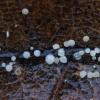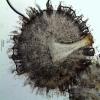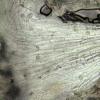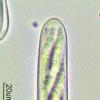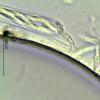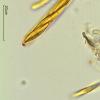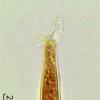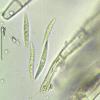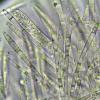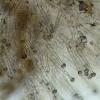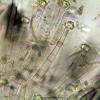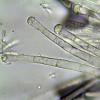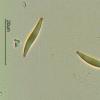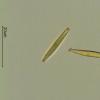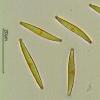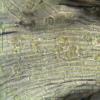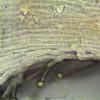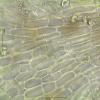
24-12-2025 17:08
Hulda Caroline HolteHello, I have found this propoloid ascomycete on

21-12-2025 09:32
Hello.A tiny ascomycete found embedded in wood in

21-12-2025 21:32
Pol DebaenstHello, Garden, Burgweg 19, Veurne, BelgiumOn 10/1

22-12-2025 23:38
Patrice TANCHAUDBonsoir, récolte sur un mur en pierre, apothéci

22-12-2025 00:47
Patrice TANCHAUDBonsoir, récolte à proximité du milieu dunaire

Hola a todos.
Subo unas fotos de un asco que hemos encontrado hoy sobre hojas de Quercus.
Miden hasta 700 micras de diámetro y un pie de unas 400 micras.
Ascas aporrincas, hemiamiloides.
Esporas de 18-26 x 3-3,5 micras, multigutuladas.
Pelos de 80-120 x 6-7 micras, con superficie finamente verrugosa y con cristales en el ápice.
¿Qué les parece? Gracias por su ayuda.
Rubén
in my opinion Incrucipilum ciliare/ Dasyscyphus ciliaris, not rare on Quercus leaf in autumn.
Greetings Peter.
Edit: Has seen just in my notes, there was also finding in may.


I think I see, in the sixth image, staining of the spore apices by the IKI - did you see something like this?
See: http://www.ascofrance.com/search_forum/38259
un saludo
Chris

I actually so far overlooked this hemiamyloid reaction of gel caps at spore ends but I see it on images of Stip and Nihad Omerovic, and on yours of course.
Zotto

I actually so far overlooked this hemiamyloid reaction of gel caps at spore ends but I see it on images of Stip and Nihad Omerovic, and on yours of course.
Zotto

Hola a todos.
Gracias por sus respuestas, Peter, Zotto, Chris.
He hecho otra preparación y sí he visto reacción hemiamiloide en los extremos de las esporas, os paso fotos. Pero sólo es visible en las esporas recién expulsadas del asca. Las que tenía recogidas de esporada libre en el porta, las miré unas 2 horas después de obtener la esporada y no vi esa reacción rojiza. Creo que puede ser restos de gel que se quedan pegados y luego desaparecen.
Zotto, no sé si entendí bien en su mensaje "the excipulum has is warted outside", creo que se refiere a que las células externas tienen verrugas, no?. Adjunto fotos de ese detalle también.
Gracias por su ayuda.
Rubén
